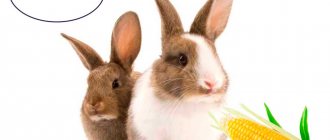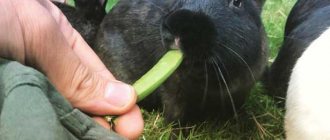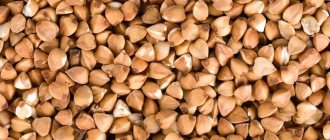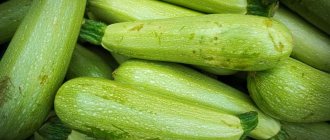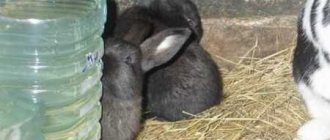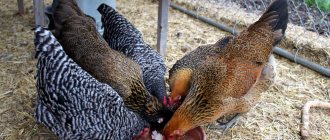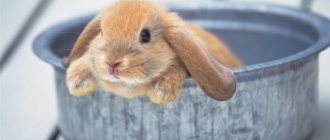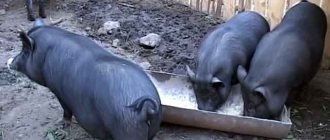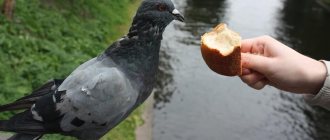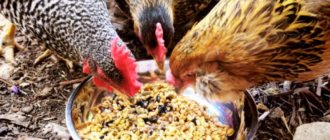A rabbit is an easy animal to keep. It is unpretentious and reproduces quickly, eating almost everything that is offered. However, proper nutrition is the key to health and productivity. It is important for beginners to know whether it is possible to feed rabbits raw potatoes or whether it is better to boil them. The vegetable is nutritious and inexpensive, but feeding this product has its own peculiarities.
Is it possible to give raw potatoes to rabbits?
Any farmer strives to get more while investing less. It is easier to give rabbits raw potatoes, which they readily eat in the absence of more tasty food. Unprocessed tubers contain more vitamins B, C, and other useful substances, such as potassium and iron.
However, the proportion of uncooked potatoes in the diet should not be large. In nature, rabbits do not consume this product. The body does not absorb the starch contained in raw potatoes well. Often such food causes digestive disorders and worsens the functioning of the stomach.
To avoid problems, it is important to follow some rules:
- You need to give washed tubers, preferably cut them.
- Choose quality potatoes. Frozen or rotten ones are crossed off the menu. Green potatoes, eyes and sprouts contain solanine, a life-threatening substance.
- There are practically no proteins in root vegetables - substances important for wool. Therefore, if the main purpose of breeding is fur and skins, you need to find an additional source of proteins.
Unaccustomed rabbits and many adults are reluctant to eat raw, unleavened product. This is mainly caused by a poor diet, especially in winter, or a lack of water.
Raw potatoes are given as a last resort or occasionally - for variety. It is advisable to choose others from unprocessed vegetables, for example, carrots or cabbage.
Useful properties of potatoes for rabbits
| Potatoes are a juicy root vegetable that is a source of beneficial vitamins (A, C, B, E, K) and minerals (Mg, K, P, Fe, Si), as well as starch (up to 20%). | |
| Beneficial features | enriching the diet with useful substances; due to the absence of organic acids in the composition, the sensitive walls of the gastrointestinal tract are not irritated; Contains no fats that are difficult to digest. |
If you add potatoes to your rabbits’ diet, you can see the following results:
- Rapid gain of muscle mass.
- Good physical activity.
- Improving the functioning of the stomach and intestines, increasing appetite.
- Immunity increases; the risk of dry eyes, rhinitis, increased or decreased excitability is reduced.
- Rabbits are born healthy and viable.
- The functioning of the heart and blood vessels is supported.
Can rabbits be given potato peelings?
The skins of young root vegetables are not taken. Older potato peelings are used in animal diets, but with caution. The same rules apply here as for raw vegetables. Use only washed cleanings. Waste is not collected in the following cases:
- from green potatoes;
- with eyes, sprouts;
- from low-quality root crops - rotten, diseased, moldy.
Raw peelings are fed in moderation. It is advisable to boil the product, so it is better absorbed. They are given both separately and as part of other “dishes”.
Raw potato peelings are sometimes dried and grated. This flour is an excellent component for mixtures. Store in a dry place at low temperature. Before feeding, they sometimes steam it: pour boiling water over it and let it cool.
Many farmers give rabbits potatoes or peelings as a budget food. Moreover, in terms of the composition of vitamins and microelements, the purification is comparable to a whole vegetable.
Is it possible to feed rabbits beets?
In Russia, 3 types of crops are grown: table crops, fodder crops, and sugar crops. Only 2 of them can be used to feed animals.
Table beets should not be given to lagomorphs. This is due to the fact that this variety of vegetable negatively affects the stomach and intestines due to its high fiber content, as well as organic acids. Red beets are not suitable for rabbits, as they cause diarrhea, interfere with the absorption of calcium, and if consumed in moderation, increases the risk of their death.
Inexperienced owners of lagomorphs do not always know for sure whether it is possible to give red beets and raw potatoes to rabbits. This mixture will definitely harm the health of the animals, so it is better to choose a different variety of beets and boil the potatoes.
Rabbits can be given fodder and sugar beets, as they are rich in nutrients and are easier to digest than table beets. The animals eat all parts of the vegetable crop: roots, tops, leaves.
When feeding lagomorphs with beets, the following recommendations should be followed:
- The animals eat the vegetable raw or boiled.
- For the first tasting, boiled beets in a small portion are suitable; its quantity should be increased gradually in the absence of negative reactions.
- Before serving, the tops must be carefully examined and rotten or limp twigs and leaves removed. The raw materials should be washed, doused with boiling water, and cut into medium-sized pieces.
- The tops are mixed with grass, branches and other food.
After harvesting, root vegetables must be dried under a canopy or in another room with good ventilation and protection from rain. They are laid out on a tarpaulin in one layer and left for 24 hours. Then the vegetables are sorted: the spoiled ones are used first, and the good ones are sent for storage in the cellar.
Before use, beets with areas of rot are washed and the affected areas are removed. You cannot store them, as they will completely disappear.
Sugar or fodder beets can be given to rabbits from 4 weeks after birth. The initial dose should not exceed 25 g per day, this portion can be increased over time. Boiled vegetables are more suitable for children. A week after introduction into the diet, young animals are given raw or dried beets as part of feed mixtures or with silage.
2 months after birth, the daily norm of root vegetables increases to 100 g. At 3–4 months of life, rabbits are given 150 g of beets per day. After 4 months, a portion of the vegetable is 250 g.
Interesting! If rabbits are accustomed to beets from childhood, then adults will be able to eat about 500 g of the vegetable without harm to their health. Otherwise, they will suffer from digestive disorders.
Beetroot complementary foods are introduced into the diet of pregnant females only if they have been accustomed to the vegetable since childhood. The optimal daily dose does not exceed 450 g (100–150 g three times a day). Tops are suitable for feeding rabbits, but are slightly withered. The daily intake of this product is up to 450 g. It is believed that beets increase lactation.
Is it possible to feed potato tops?
Sometimes they supplement the diet with above-ground parts of the plant. The tops are dried and given in small quantities. Although such food is not always useful:
- Here, just like in the eyes, sprouts, and green parts of potatoes, solanine, a natural poison, accumulates. Sometimes poisoning leads to serious problems and even death in rabbits.
- Potatoes are sprayed with chemicals and poisons to protect them from Colorado potato beetles and other pests. The treatments do not go unnoticed, no matter what is written on the packaging. Bushes accumulate harmful substances in varying quantities.
- The tops are often affected by various fungi, which is also harmful to the rabbit’s health. There are digestive disorders or other disorders.
Feeding your rabbit other foods
A balanced diet is the key to good health, fertility and productivity. When approaching the issue of breeding rabbits, you should familiarize yourself with the list of useful products and those that are contraindicated.
Which ones might be useful?
The omnivorous nature of rabbits allows you to diversify their diet as much as possible, using a wide range of products - from vegetables from the refrigerator to specialized mixtures.
You can add to the menu:
- Green food - freshly cut grass, alfalfa, peas, sainfoin, a mixture of vetch and barley, garden tops (except for tomatoes and potatoes);
- Rough food - hay, straw, branches;
- Juicy food - beets, potatoes, pumpkin, carrots, zucchini, watermelon, Jerusalem artichoke;
- Concentrates - grain (corn, barley, wheat, oats) and mixed feed.
Which ones should you not feed?
Keep an eye on what goes into your animal's feeder. For example, juicy cabbage in large quantities causes bloating and indigestion; Some plants are completely poisonous and lead to severe poisoning.
It is prohibited to feed:
- Green food - buttercup, hemlock, lily of the valley, hellebore, henbane, celandine;
- Rough food - branches of elderberry, buckthorn, broom, bird cherry, wild rosemary, cherry, apricot, peach, black cherry, plum, as well as wolfberry branches;
- Juicy food - limit cabbage, turnips, rutabaga, beets, exclude fruits;
- Concentrates - cottonseed cake;
- Toxic plants - hemlock, mustard, rapeseed, foxglove, datura, spurge.
Feeding boiled potatoes
After heat treatment, the root crop is absorbed much better. After removing eyes, sprouts, and washing, potatoes are boiled for rabbits.
For animals, prepare low-fat soup with vegetables or make puree.
Sometimes boiled potatoes are mixed with other ingredients:
- Oats, wheat, barley, corn. There will be half of the tubers in the mash, the grains will be 35–40%. Add more peas and cabbage - 5% each. All ingredients are boiled, the grain is sometimes steamed.
- Rabbit or pork feed . The mixture contains approximately 45%. Another 5% is boiled chopped cabbage or nettle. The remaining 50% is potatoes.
Parsley is added to pregnant and lactating females. This will provide more milk for feeding the rabbits. When they are weaned, the “mama” parsley is replaced with dill. This is necessary so that the milk does not burn out.
Only fresh mash is given to rabbits. It is nutritious and healthy, but it is important to know when to stop. For meat breeds, about 200 g per day is enough. Pregnant females are usually given the same amount. There is no need to increase the volume, otherwise pets will develop obesity and illness.
The amount of food depends on your lifestyle. If the animal moves little and is constantly in a cage, the volume of boiled potatoes is reduced to 50–70 g. Sometimes rabbits are kept as pets. They run around the apartment, burning more calories. For such individuals, the consumption rate is already 80–100 g per day.
Like any vegetable, potatoes lose some of their nutrients when processed. However, it is absorbed better this way. It is advisable to give potatoes boiled. Cook for 20–30 minutes.
For fur-bearing and breeding rabbits, the diet is carefully selected. More vitamins, microelements and other useful substances are required. A week before mating, the volume of boiled root vegetables is limited or completely refused, as it negatively affects activity.
For what reasons is the supply of potatoes limited?
The main problem that rabbit breeders face when feeding their pets potatoes is obesity, which negatively affects their life and the functioning of the body as a whole. To avoid this, some categories of rabbits are limited in their consumption of vegetables.
Restrictions are needed in the following circumstances:
- Preparing animals for mating (reduce the quantity within a week).
- When breeding animals for decorative use or for fluff.
- At the first manifestations of obesity.
- During pregnancy, if females have noticeable disturbances in their health.
Video Potatoes are one of the main types of food for rabbits
Rules for introducing potatoes into the diet
New foods are always introduced to gradually. Drastically changing your usual menu is harmful. Start giving rabbits potatoes with a small amount. Over time, the volume is brought to normal. For any breed, the share of the product in the diet is:
- boiled - 40–60%;
- raw - up to 10%.
The same applies to cleaning. When feeding, take into account age, breeding goals, and health status.
You can introduce potatoes into your diet no earlier than four months. This food is given twice a week, preferably in the evening. As a rule, the tubers are cut or pounded with water and other mash ingredients. Even boiled potatoes are best served without skin.
Having introduced root vegetables into the diet, you need to constantly monitor your pet’s condition. If the rabbit feels unwell, this food is immediately canceled. Potatoes, especially raw ones, are an additional burden on the digestive organs, so they are not allowed to be given to weakened, sick animals.
Consumption standards
An adult healthy and active individual should receive at least 200 g of potatoes per day. The norms for unhealthy, sedentary individuals should not exceed 60-70 g. For young animals, the daily norm is 100-125 g. In the summer, when animals have a large selection of succulent food of different types, the share of potatoes in the menu can be slightly reduced. Most likely, the animals themselves will eat less of it. But in winter, on the contrary, the number of root crops increases.
Before slaughter, a slight excess of the norm is also allowed. This will allow you to gain more weight. Excessive consumption of potato delicacies can lead to obesity, which will affect the quality of the skin and reduce the ability to reproduce offspring.
Contraindications and harm
Sometimes you shouldn't feed rabbits potatoes. Such cases include:
- Young age - less than four months . If breeding for meat is planned, raw potatoes are often not given. Although some farmers, shortly before slaughter, on the contrary, actively use potatoes - raw or boiled. Thanks to this, animals quickly gain weight.
- Excluded from the diet of rabbits during pregnancy and feeding. The starch in raw potatoes sometimes clogs the milk ducts. A large load on digestion at this time is also undesirable. Overweight females are not as active and give birth to fewer rabbits.
- It is not recommended to feed raw potatoes to breeding males. The product undermines their health, especially harms digestion. The vegetable gives you extra pounds and awakens laziness. Overfed males pay little attention to female rabbits.
- Green root vegetables are always harmful due to solanine. The same applies to shoots, eyes, and tops.
Potatoes are an inexpensive and convenient food for rabbits. However, it is given with caution. This is especially true for breeding and weak animals. It is preferable to give the vegetable in boiled, crushed form.
Reasons for limiting consumption
Rabbits should be fed potatoes only in cases where their diet is scheduled and scheduled. A balanced diet to cleanse the body of furry animals will help get rid of weakness and strengthen the immunity of each rabbit. Is it possible to feed raw potatoes to rabbits immediately after weaning the young?
Rabbits are not given complementary feeding with potatoes until they are 2 months old. A diet with constant addition of root vegetables is dangerous for animals. Reasons why you should not rush to add unlimited quantities of potatoes to your pets:
- Substances it contains. Solanine is poisonous to rabbits and can lead to the death of young animals. Potatoes can only be added to the feeder in their peeled form.
- A sudden change in diet is fraught with serious consequences for the rabbit’s body. You cannot feed raw or boiled potatoes in large quantities: the rabbit may develop an individual intolerance to the substances contained in the tubers, so complementary foods should be introduced gradually, observing the reaction of the eared ones to changes in diet.
- Any negative reactions in animals’ bodies to new complementary foods are a good reason to refuse potato supplements. Rabbits should not be given tops or boiled tubers, which cause diarrhea or weakness. It is better to choose another healthy vegetable complementary food.
It is important to pay attention not only to the quantity of the product, but also to the quality. It is not profitable to give waste to long-eared animals who are fastidious in food. Boiled or raw grated potatoes are fed as the main product for diarrhea.
The rabbit absorbs potato supplements better in the fall and winter, but in the summer this supplement must be abandoned. Greens or twig food will help satiate the animals.
Basic rules for feeding
Potatoes are a succulent food. As you know, succulent food is rich in water, minerals, vitamins, but poor in protein and fiber. They are eaten with appetite and are well digested by rabbits. In nursing rabbits, the amount of milk increases, and its nutritional value increases significantly.
Animals should be fed in the following order: first they give concentrates, and then only succulent feed. In winter, feeding is completed with hay, and in summer - with green feed.
Potatoes, as a new food, should be introduced within a week, gradually increasing the amount to the consumption rate.
The share of tubers in the diet of rabbits
Do not forget that rabbits should be fed only high-quality feed. If you have doubts about the quality, then it is better to exclude such food from the diet altogether, so as not to risk the health of your charges. Food must be poured only into special feeders - this will prevent animals from trampling the food.
It should be remembered that potatoes are not the main product, but only supplement the diet of animals.
All animals should have a high-quality diet, where it is necessary to alternate between various succulent foods, not forgetting the taste preferences of your pets. Some people will love to nibble on potatoes in their natural form, while others will like boiled peelings or mashed potato mash. The main thing is not to let the animals go hungry, otherwise they will indiscriminately absorb everything that comes their way, and this leads to indigestion.
We advise you not to overdo it with potatoes, as this food is not typical. Do not exceed daily intake. Feed no more than 200 - 350 g per adult. Only in case of fattening, you need to pour mash with boiled potatoes and combined feed 3 times a day. If possible, alternate between different types of potatoes, this way you will create an optimal nutritional diet.
How to give fodder beets to rabbits
New rabbit owners should have no doubt about whether their rabbits can be given fodder beets. Animals will happily feast on the juicy pulp, which is rich in nutrients. Carbohydrates accelerate weight gain, which is especially important for owners of meat breeds.
Baby rabbits are given beets from 4 weeks after birth.
At first, the animals are fed boiled root vegetables, which are often mixed with other food (potatoes, greens). Red beets are also used to make silage:
- Chopped green legumes are poured into the bottom of a large barrel.
- The second layer is the peel of potatoes, carrots and other vegetables.
- The third layer is chopped beets (tops, root vegetables).
- The rest of the barrel space is filled with sawdust.
- The top of the container is covered with clay.
In winter, this silage is given to rabbits as a vitamin supplement, which strengthens the immune system.
Sugar
Rabbits enjoy eating sugar beets as they contain a lot of sugar. The root vegetable contains ascorbic acid, group B elements, pectin and other substances that are necessary for the normal functioning of the cardiovascular system. The amount of fiber in the vegetable is small, which is good for lagomorphs. Therefore, sugar beets are healthy, tasty, and also easily digestible by the animals.
With regular use, it increases hemoglobin levels, strengthens the immune system, and normalizes digestion.
Rabbits eat raw and boiled beets (the second option is better digestible). The optimal portion of the product is 300 g.
Beet tops
Beetroot leaves and stems are not given fresh; they need to be dried in the sun. After eating juicy greens, flatulence and diarrhea occur.
Chopped beet tops are given to rabbits as feed, mixed with other food (vegetables, hay, grass, one of the components of silage).
The greens are cut with a small base from the beets, sorted, damaged leaves are removed, dirt and insects are washed off. The tops are connected in groups of 3 and hung in a darkened room with good ventilation.
Before serving, the tops are usually chopped and then mixed with feed. It is advisable to steam the raw material, then it will be easier to digest.
Depends on the season
In winter, succulent feed becomes scarce. Raw potatoes can be stored under the necessary conditions all year round, so in winter their role in feeding rabbits increases. Is it possible to give rabbits potatoes in winter? There is a positive solution. It perfectly complements the poor winter diet.
In summer, succulent food is available in abundance, so the potato content in the diet should be reduced to provide a variety of products, each of which has its own value. You can get rid of it completely, since animals receive succulent food in abundance in the form of greens and plant branches.
A few words about feed value
Potatoes are a succulent food that rabbits will eagerly eat. The animal body is able to well assimilate and digest the root vegetable in its raw form.
The vegetable contains the following components:
The first element found in potatoes is capable of rapid absorption in the body. The starch then begins to convert into fat. That is why potatoes are included in the fattening diet before slaughter.
The raw root vegetable should be given to lactating females with caution due to the possibility of blockage of the milk ducts.
Raw root vegetables are not given to young animals until 120 days after birth. When compiling a feed ration, it is recommended to take into account the following: an adult male can receive about 40 kg of potatoes per year, and a female – 36 kg. The daily norm is 0.25 kg per day or 1/3 of the total amount of succulent feed.
Video “Rabbles diet”
This recording of a seminar for rabbit breeders will help you understand the questions: what is the best way to feed your pets, what is a balanced diet, which food components are really useful, and which are undesirable and even dangerous.
Featured Articles
Mating rabbits: when can you start?
Mating rabbits and the main nuances of mating, When rabbits begin to mate, and how to determine the female’s heat, how long this period lasts, read the article Cages for industrial breeding of rabbits - can you do it yourself? For breeding and keeping rabbits, it is recommended to use industrial cages. You can buy them, but it’s easier and more profitable to make them yourself.
Feeding rabbits in the summer season What to feed rabbits in the summer, what plants should not be given to rabbits. We will describe the types of food and tell you how many times a day you need to feed rabbits.
